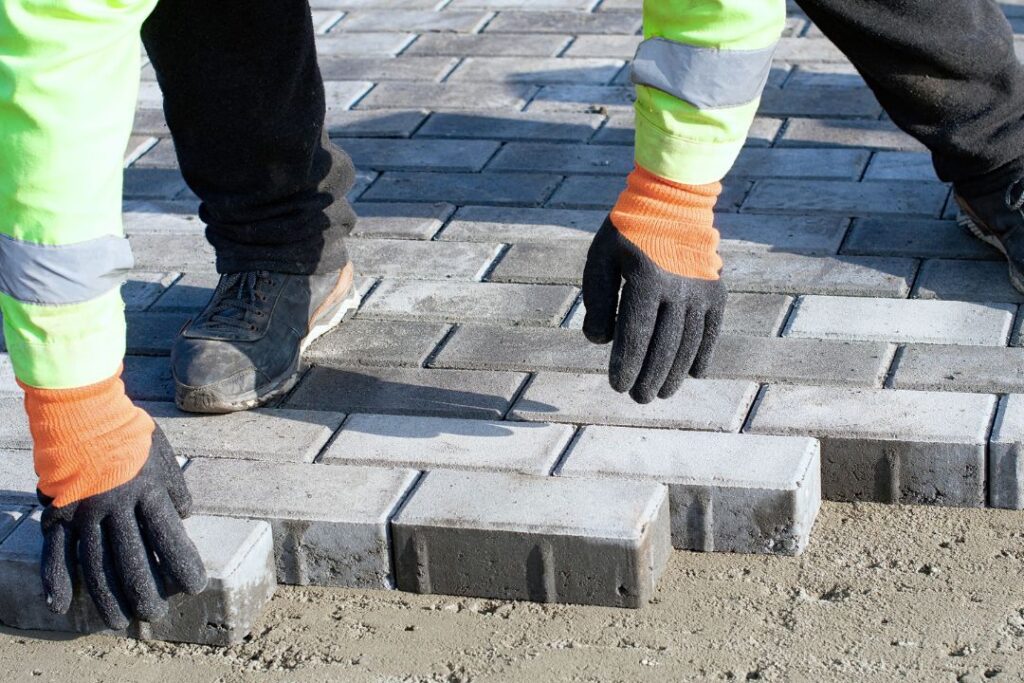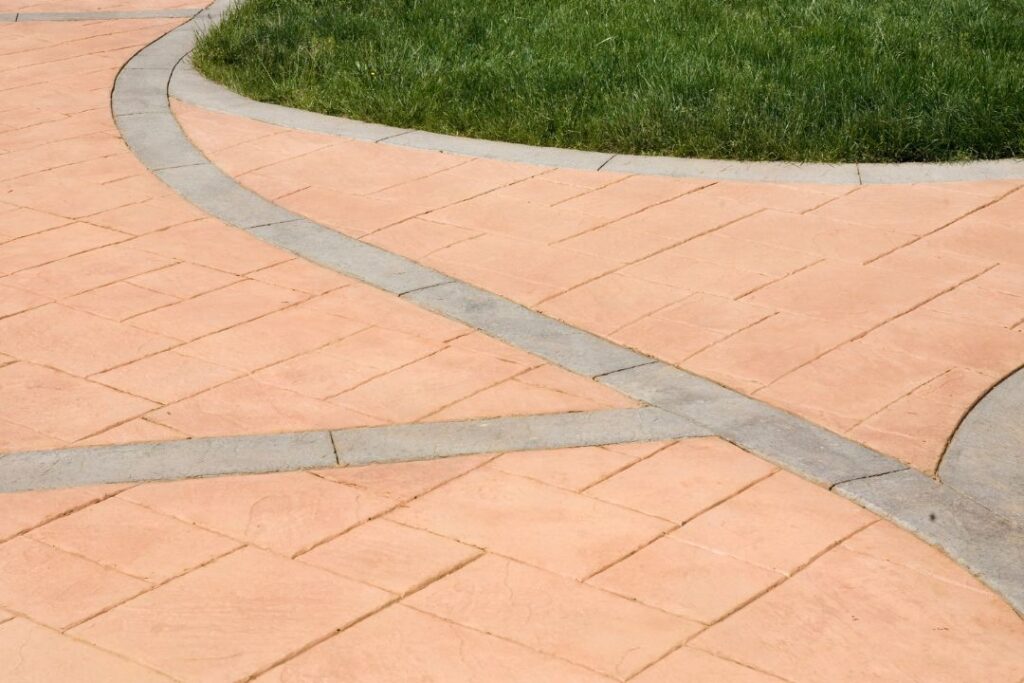Logan Homeowners need to make an essential decision in choosing the material for patios, walkways, & driveways. The two most common options are concrete and pavers. Each with its advantages as well as drawbacks. This article provides a comparison to help homeowners make the choice.
As the climate varies greatly in southeast Queensland and residents have different lifestyles; it’s essential to opt for materials that are visually appealing, functional as well as durable. A person’s decision between concrete and pavers could impact the appearance, maintenance requirements, as well as the value of his/her property in Logan.
Understanding Concrete: An Overview

Advantages of Concrete
- Durability: One of the advantages of concrete is its durability. It is exceptionally strong. Can withstand heavy use making it well-suited for areas with high foot traffic or vehicle traffic. For expert installation, consider hiring a professional concreter who can ensure the job is done right.
- Low Maintenance: Concrete requires minimal upkeep. Concrete surfaces typically only require an occasional pressure wash to keep them looking good. Applying a good concrete sealer every 3-5 years can also help improve the lifespan of concrete.
- Cost Effectiveness: Generally speaking concrete tends to be more affordable than pavers in terms of both material costs and installation expenses. This makes it a budget-friendly option for homeowners who want to keep costs down. Check out this detailed price breakdown of concreting costs.
- Design Versatility: Although traditionally not known for its visual appearance, modern concrete can be textured, stained, or coloured to achieve various aesthetic effects making it a versatile option. Furthermore, concrete can be stamped to make it appear like pavers, stone, wood or other alternative materials.
- Weather Resistance: Concrete stands up well to a variety of weather conditions, including the fluctuating temperatures and heavy rainfall common in places like Logan, and southeast Queensland.
Disadvantages of Concrete
- Cracking Over Time: Concrete can crack due to ground movement, temperature changes, as well as settling. These cracks can be unsightly and difficult to repair.
- Limited Design Flexibility: Despite advances in colouring and texturing; concrete still lacks pavers’ design versatility. The uniformity of a concrete slab may not suit all aesthetic preferences.
- Surface Heat Retention: Concrete can retain heat and become quite hot to the touch, especially if it’s been coloured with a charcoal dye. An important consideration if you intend to walk over the concrete surface barefoot.
- Staining: Concrete is porous and can stain easily if not sealed properly. Oil, grease, and other spillages can leave permanent marks.
- Difficult to Modify or Repair: Once laid, concrete is difficult to modify or expand. Repairs frequently involve cutting and patching; which can be noticeable & detract from the overall appearance.
Exploring Pavers: An Overview

Advantages of Pavers
- Aesthetic Appeal: Pavers come in endless colours, shapes and textures. Unlike flat slabs of concrete, this allows Logan homeowners to create unique one-of-a-kind shapes and designs perfectly suited to your property.
- Durability and Strength: Quality pavers are very strong and can take a lot of movement without breaking. They make great driveways or paths.
- Easy Repairs: If a paver breaks or becomes stained, it can be quickly swapped out without impacting the adjacent pavers. This makes pavers a good long-term solution.
- Better Drainage: Sand fills joints in pavers. This allows water to pass through. This feature prevents water from gathering as well as flooding. An important feature during storm season.
Disadvantages of Pavers
- Higher Initial Cost: The cost of pavers is more expensive than pouring a concrete slab. The design’s complexity could also add to the cost.
- Maintenance: To keep their aesthetic appeal, pavers require more maintenance than concrete. This maintenance includes regular cleaning, re-sanding of joints, as well as removing weeds and sealing.
- Settlement & Shifting: Pavers can shift if not properly installed. This leads to an uneven surface. This problem is pertinent in areas with frequent soil movement.
- Labour-Intensive Installation: The installation of pavers is more labour-intensive than concrete. The ground must be properly prepared. Each paver is laid as well as aligned individually.
Climate Considerations for Logan & South East Queensland
Logan experiences a range of weather conditions; from hot humid and wet summers to frosty dry winters. The material for outdoor spaces must be chosen with these varying conditions in mind. Both materials are well suited to these conditions which is what makes them both excellent options. The main significant difference between the two is the natural drainage capabilities of pavers can be advantageous in managing Logan’s summer storm season rainfall.

Installation and Longevity Costs
Even though the installation costs are important, it’s also important to take into account the ongoing costs of maintenance and repairs. Concrete costs less at first but might need more money for big fixes or replacements later on. Whilst the initial cost is higher with pavers, they might prove to be cheaper in the long run due to their ability to adapt to ground movements without cracking and the simplicity of repairs.

Design and Aesthetic
Your home’s appearance is vital. Concrete gives a modern and clean look while pavers offer an old-fashioned, more natural feel. Think about what matches the look of your home and what you like. As mentioned previously concrete can be coloured and stamped to give the appearance of pavers, stone, wood or other materials. However, the design versatility and unique design possibilities with pavers are still superior to that of concrete.
Personal Lifestyle
How much time you’re willing to spend on home maintenance should also be taken into strong consideration when deciding to install pavers or concrete at your property in Logan. Concrete maintenance is less frequent and better suited to those who want minimal maintenance. Pavers require a simple yet more frequent maintenance regime to keep them looking good and performing optimally.
Wrapping Up
Choosing between concrete and pavers for your house relies on several things like visual appearance, cost, maintenance time requirement, cost and ease of repairs, and drainage considerations. Concrete is strong, easy to install, and inexpensive. But it has fewer design options and can crack over time. Pavers provide more freedom in design, are easy to fix, and provide superior water runoff capabilities. However, they cost more to install and require more ongoing maintenance to maintain optimal appearance. In the end, selecting the right option is a personal choice that each homeowner must make based on their needs and preferences.

